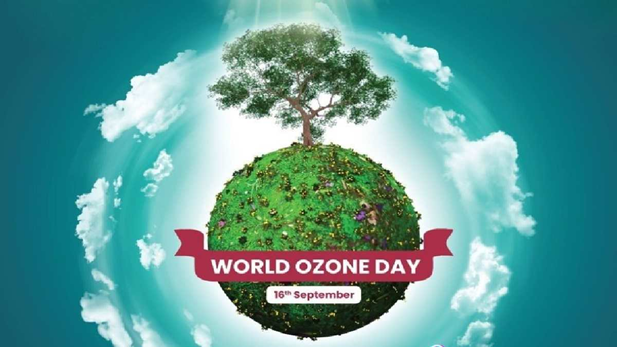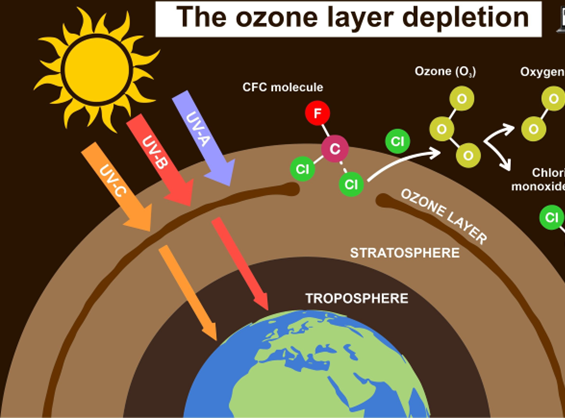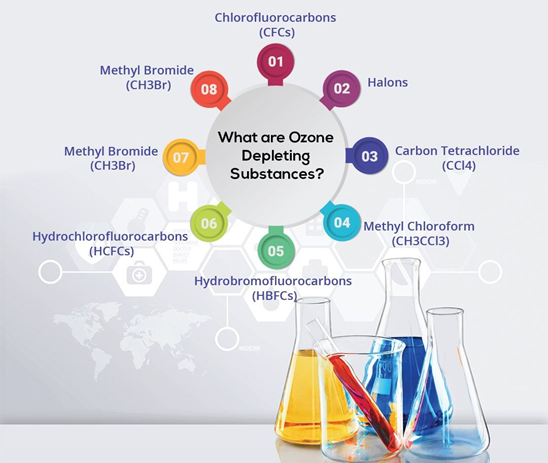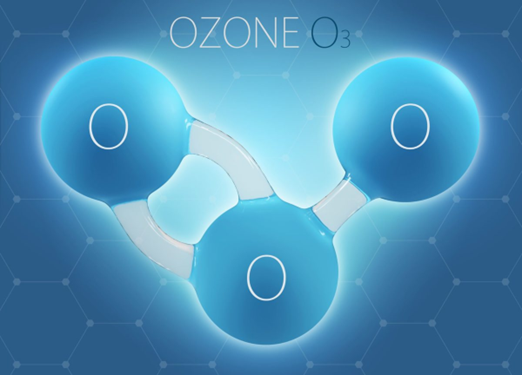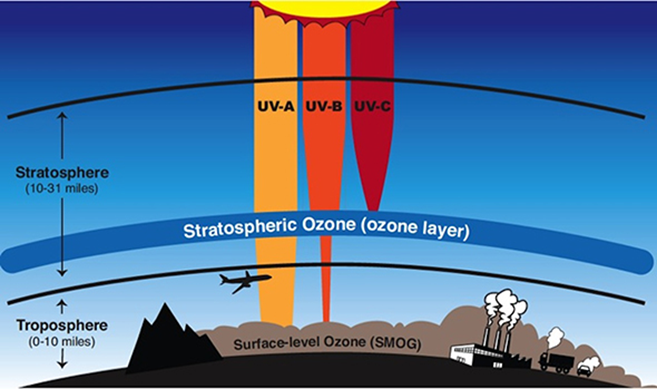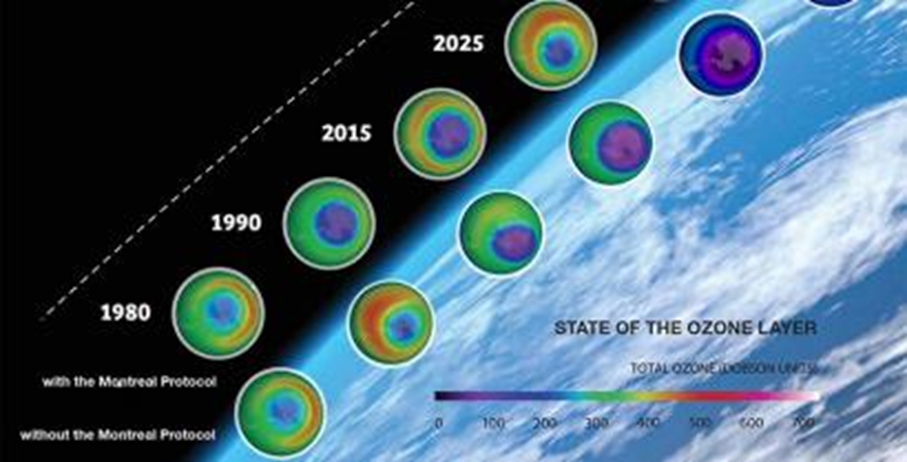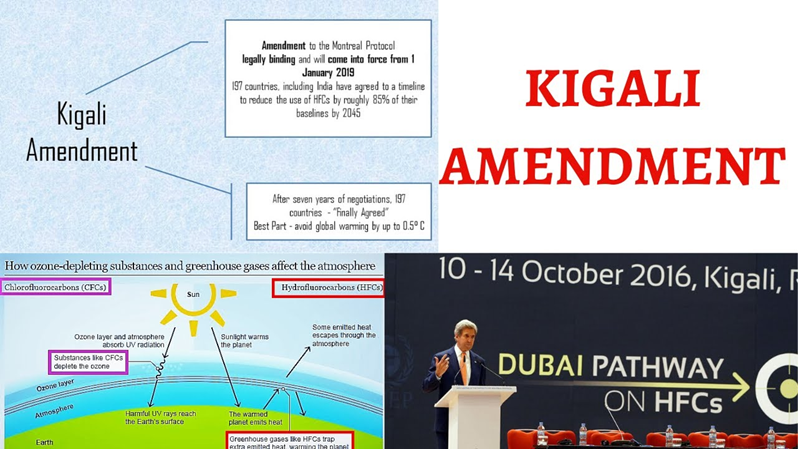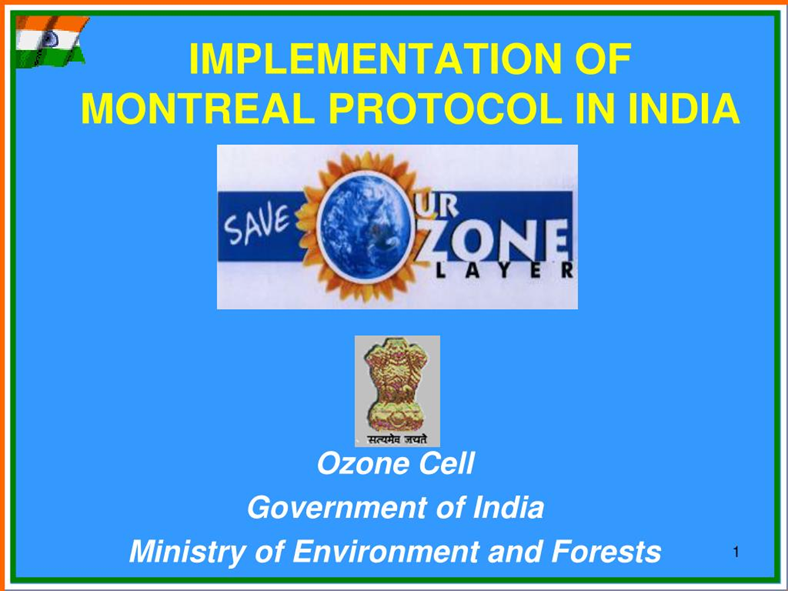World Ozone Day, also known as the International Day for the Preservation of the Ozone Layer, is observed on September 16. This day serves as a global reminder of the important role the ozone layer plays in protecting life on Earth.
World Ozone Day 2024
Why In News
- World Ozone Day, also known as the International Day for the Preservation of the Ozone Layer, is observed on September 16. This day serves as a global reminder of the important role the ozone layer plays in protecting life on Earth.
Ozone Layer
- Ozone layer is a part of the Earth’s atmosphere that absorbs most of the sun’s ultraviolet radiation which can cause catastrophic harm to living organisms. The UV rays are responsible for several health problems such as skin cancer and can also damage plants and animals.
- The day also commemorates the successful global effort to protect the ozone layer. The theme for World Ozone Day 2024 is ‘Montreal Protocol: Advancing Climate Action.’
- In 1970, the ozone layer began to thin due to the release of ozone-depleting substances (ODS) into the atmosphere.
- ODS refers to the chemicals such as chlorofluorocarbons (CFCs), halons and hydrochlorofluorocarbons (HCFCs).
- These gases would react with ozone, depleting it and forming a hole over the South Pole. In 1987, countries signed the Montreal Protocol on Substances that Deplete the Ozone Layer.
- The United Nations General Assembly in 1994 proclaimed September 16 as World Ozone Day to mark the date that the Montreal Protocol was signed.
Facts About Ozone
- It is an explosive, pale blue gas with a distinct odour.
- Dobson Unit (DU) is the unit of measurement for measuring the amount of ozone in a column of air above the Earth’s surface.
- It is continuously created in the high atmosphere by the interaction of solar UV radiation with atmospheric oxygen.
- The average total ozone concentration is usually around 300 DU (low at poles and higher at the equator).
- The ozone hole reached its biggest historical extent of 28.4 million square kilometres in September 2000.
- Ozone layer is depleted in both hemispheres of the Earth, specifically Antarctica in the Southern Hemisphere and the Arctic in the Northern Hemisphere. However, the phenomenon is more recognised in Antarctica than in the Arctic.
- The mechanism of the ozone hole is intimately related to the temperature of the stratosphere. If the temperature goes below -78 degrees Celsius, stratospheric clouds form, worsening the status of the ozone hole.
International Agreements
- Montreal Protocol:
- It is an international environmental agreement adopted on September 16, 1987.
- It is the sole UN treaty universally ratified by all 197 member states, aiming to safeguard the Earth’s ozone layer by phasing out the use of ozone-depleting substances, such as chlorofluorocarbons (CFCs) and hydrochlorofluorocarbons (HCFCs).
- Objective: To protect the Earth’s ozone layer by phasing out the production and consumption of ODS.
- Kigali Amendment:
- Adopted in 2016, the Kigali Amendment aims to phase down the production and consumption of hydrofluorocarbons (HFCs), which are potent greenhouse gases
- In 2016, countries agreed to include HFCs in the list of controlled substances under the Montreal Protocol and decided on a schedule for its phase-down.
- Before the middle of this century, current HFC use has to be curtailed by at least 85 percent. India has to achieve this target by 2047 while the developed countries have to do it by 2036.
India’s Achievement
- India as a party since 1992 has successfully implemented the Montreal Protocol for phasing out Ozone-Depleting Substances (ODS).
- India phased out Chlorofluorocarbons, Carbon Tetrachloride, Halons, Methyl Bromide, and Methyl Chloroform by January 1, 2010.
- Phase-out of HCFCs in manufacturing sectors (refrigeration & air-conditioning) will be completed by January 1, 2025.
- Estimated reduction of greenhouse gas (GHG) emissions:
- 465 million tonnes CO2 equivalent by 2022
- 778 million tonnes CO2 equivalent by 2030
- India Cooling Action Plan (ICAP) supports the adoption of climate-friendly alternatives and promotes energy efficiency during the HFC phase-out.
- The India Cooling Action seeks to
- Reduce cooling demand across sectors by 20% to 25% by 2037-38
- Reduce refrigerant demand by 25% to 30% by 2037-38
- Reduce cooling energy requirements by 25% to 40% by 2037-38
